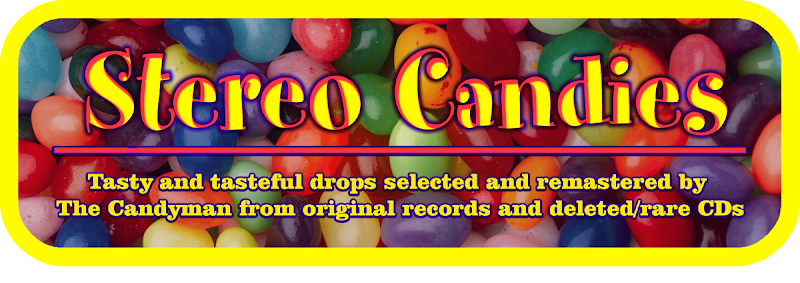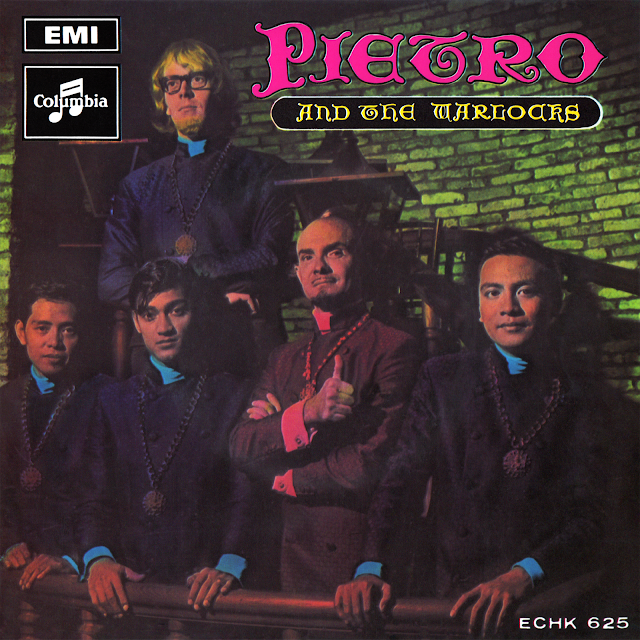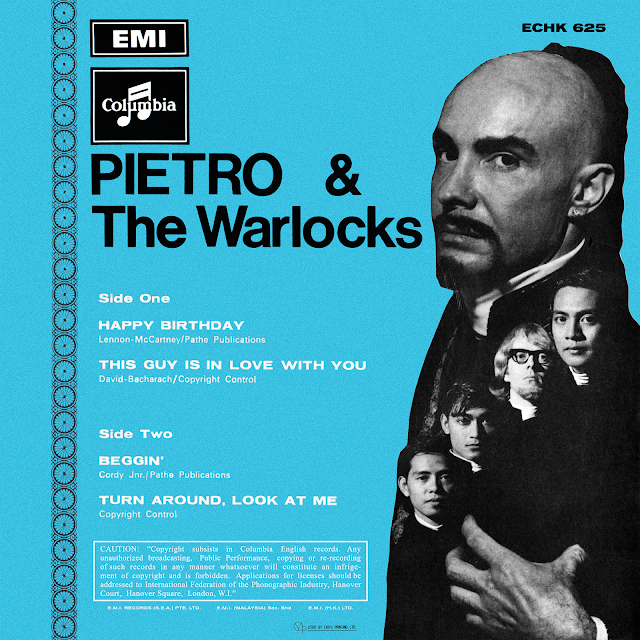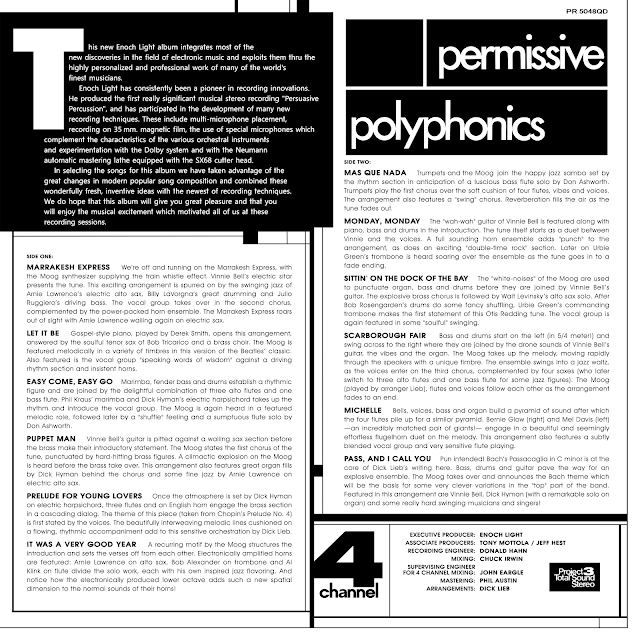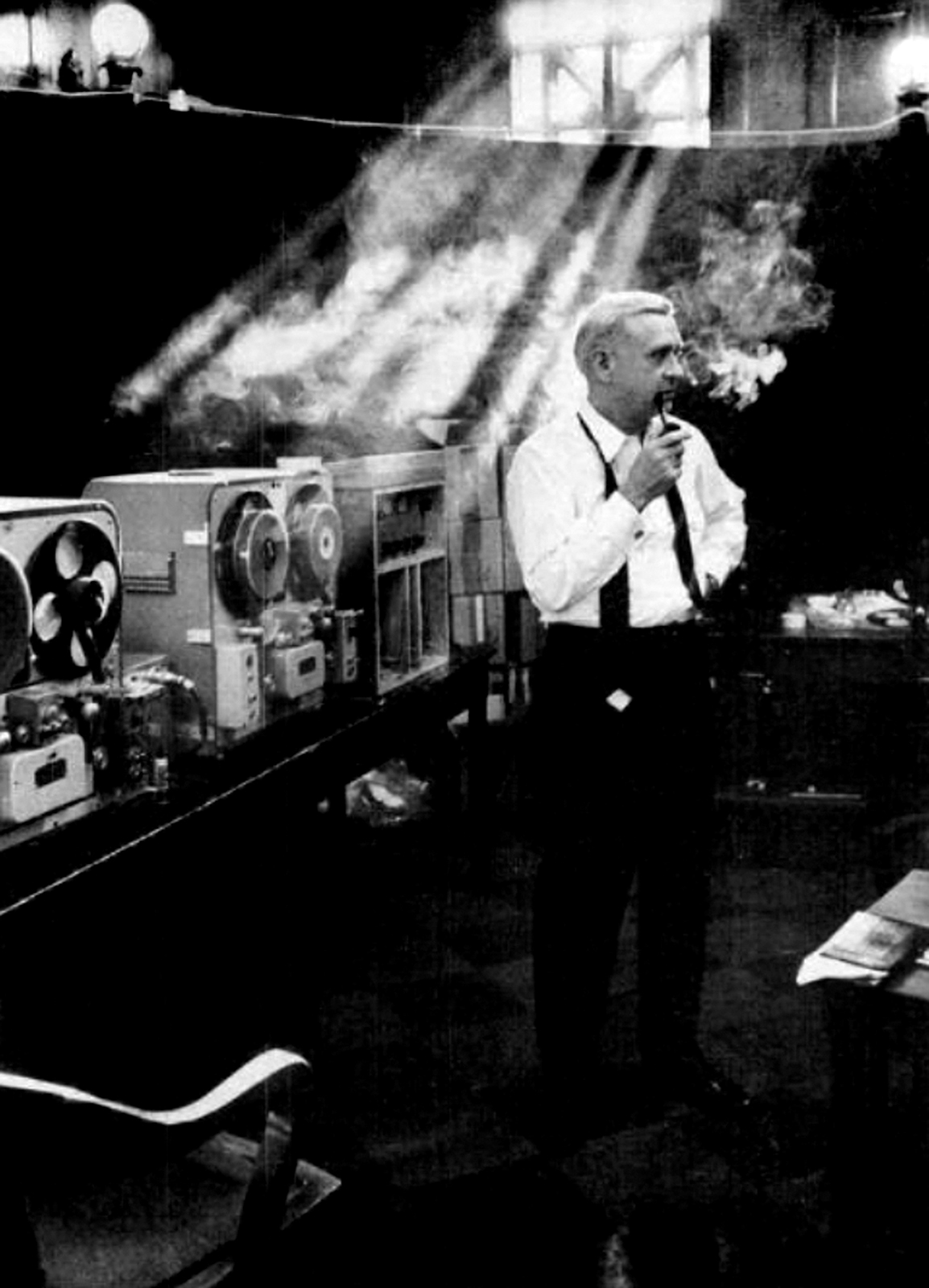[from "Adventure in Carols" liner notes]

Here we are again, approaching that particular time of the year when we all become good and exchange gifts... Even though I don't have a 'rule' to post a Christmas record every month of December, this time it's my pleasure to introduce a masterpiece by Ferrante & Teicher which has never been re-issued on CD, and whose digital version available on the market comes with no less than an indecent amount of clicks, crackles and even... skips!!! And what other month would suit better an album titled "Adventure in Carols"?
For this remaster I also ventured in a territory in which I'm still experimenting to find my way: the 'simulated stereo' effect. In some of the most recent posts I already offered a few pseudo-stereo tracks derived from original mono recordings, but for this post I decided to process the entire album.
Basically, I tweaked the Eq of the left and right channels and used the differences between them to assign different pan positions to certain groups of frequencies. As I said, I'm still in an early stage and I would like to know your sincere opinion, so don't be shy and let your comments flow!
Some quite rare and particular releases are going to be featured on the blog in 2019, I will try to post at least one record every month and I beg you to believe that I really can't do better than this. I also have a couple of requests to honour and I'll try my best to keep my word as usual.
If you enjoy what you read and/or listen on these pages, then please let me know about it: leave a comment or get in touch, my e-mail address is written at the bottom of each post.
Have fun and a Merry Christmas! Now let's move on to Ferrante & Teicher and their immensely creative "Adventure in Carols"!

The following biography was created comparing the most relevant information available on the pages dedicated to Ferrante & Teicher hosted on AllMusic, Amoeba Music, ferranteandteicher.info, Space Age Pop and Wikipedia.
- - - - - - - - - - - - - - - - - - - - - - - - - - - - - - - - - - - - - -
Arthur Ferrante (September 7, 1921, New York City - September 19, 2009, Longboat Key, Florida) and Louis Teicher (August 24, 1924, Wilkes-Barre, Pennsylvania - August 3, 2008, Highlands, North Carolina) met while attending the prestigious Juilliard School of Music; both were child prodigies, and they struck up a fast friendship, performing together as a duo even while they were still in school.
After graduating as piano majors, by 1943 they both joined the Juilliard faculty, while developing a distinctive style of their own during their spare time. In 1947, they became a full-time concert act, at first playing nightclubs, then quickly moving up to classical music with orchestral backing. A switch to popular songs and standards by the likes of Kern, Porter, Gershwin, and Rodgers made them mainstays in the pops-orchestra field.
At the same time, they began experimenting with modifications to pianos, inserting objects into the string beds, striking keys or strings with blocks, and generally striving to figure out how to get the strangest possible sounds. By adding paper, sticks, rubber, metal bars, chains, glass, mallets, and other found objects, the duo was able to produce a variety of bizarre sound effects that sometimes resembled percussion instruments, and other times produced an outworldly and dreamy, almost electronic sound well before synthesizers were commonly used in recordings. The treated piano works of John Cage influenced their early work, but they had their own unique sound.
Here's how the pair described this musical transition: «...it was while teaching that we began experimenting and creating new material for two pianos. For novelty numbers we stuffed wads of paper, sticks, rubber stops, masonite strips, cardboard wedges, and sandpaper into the pianos conjuring up weird effects (a la [John] Cage) resembling gongs, castanets, drums, xylophone, and harpsichord. Though we have gradually dropped many of these gimmicks, we feel that we have developed a musical style, and undoubtedly play in a manner that makes some former colleagues at Juilliard wince a bit.»
However innovative and exciting their work was, it was tough to translate into commercial success. Their concerts were as likely to be held in gymnasiums, churches, cafeterias, and ballparks, as in concert halls. Much of what they earned went into new motors for their delivery truck. «If our wives hadn't worked,» Teicher once said, «we never could have survived...»

Some tracks from "Adventure in Carols" were previously released on "Xmas Hi-Fivories"... (front cover)
People who associate Ferrante & Teicher only with the Easy Listening music they produced from the early '60s onwards, are often startled to hear their prepared piano works of the '50s. There is nothing quite like them in the annals of recorded sounds. In fact, throughout this period, the duo was accused of using more than just pianos to generate these sounds, and they had to produce the following affadavit to convince Columbia Records before the label released their first single:
«Divers persons upon hearing records of "Susanna's Last Stand" and "Caravan" and subsequent recordings by Ferrante and Teicher have asserted, implied or otherwise made known that such recordings were made by the use of various sundry instruments other than two pianos. Upon our solemn oath and undertaking we hereby assert, acknowledge, testify and state without equivocation or fear of contradiction that the only instruments played by Ferrante and Teicher in connection with the recordings of such compositions were two pianos. - Howard Scott and David Oppenheim, 24 Dec 1952.»
Among the twenty or so albums that the duo recorded until 1960, it is worth mentioning at least those that are entirely comprised of prepared piano pieces, here'a list: "Hi-Fireworks" (Columbia, 1953), "Xmas Hi-Fivories" (Westminster, 1954), "Soundproof" (Westminster, 1956), "Soundblast" (Westminster, 1956), "Adventure in Carols" (Westminster, 1956), "Heavenly Sounds in Hi-Fi" (ABC-Paramount, 1957), "Ferrante and Teicher With Percussion" (ABC-Paramount, 1958), "Blast Off!" (ABC-Paramount, 1958) and "Dynamic Twin Pianos" (United Artists Ultra Audio, 1960).

...a 10" album issued on Westminster back in late 1954. (back cover)
In 1959, their ABC-Paramount producer, Don Costa, moved to United Artists and got Ferrante & Teicher signed by his new label, where they quickly began to tailor their sound to a more mainstream audience. Costa was sent the scores from the United Artists movie "The Apartment" and thought that the main theme would have sounded good on twin pianos. In brief, the "Theme from 'The Apartment'" single went up to #10 on the charts.
This success was quickly followed by their biggest hit, an arrangement of Ernest Gold's epic theme from the movie "Exodus", which climbed to #2 and inspired a popular jazz version by saxophonist Eddie Harris. 1961 brought them another hit with the song "Tonight", which was originally featured on the Brodway musical "West Side Story" in 1957 and in the movie of the same name. This lead to the release of their highest-charting album, the #10 "West Side Story and Other Motion Picture & Broadway Hits".
At their next gigs they started dressing alike, donning flashy tuxedos, horn rim glasses and wigs. They added dramatic flourishes to their performances, did comedy bits in between songs and billed themselves as The Grand Twins of the Twin Grands. Their bookings increased and their salaries skyrocketed. Their United Artists contract called for at least three albums a year, but they often recorded more: a flood of Ferrante & Teicher LPs was released over the course of the '60s, with around thirty of them reaching the Pop charts up through 1972.
They maintained a heavy touring schedule, playing more than a hundred concerts a year at the height of their popularity. They also managed to release one final Top Ten single in 1969 with their cover of the theme from the movie "Midnight Cowboy", which featured the distinct 'water guitar sound' of Vinnie Bell.
Ferrante & Teicher's voluminous recording pace tailed off during the '70s, although they did continue to put out albums on a regular basis. In 1979, they left United Artists to form their own label, Avante Garde, the title perhaps an ironic nod at their early days as serious pianists. They stopped performing and retired in 1989, setting up homes near each other in Sarasota, Florida.
The Lounge / Exotica revival of the '90s helped renew interest in their experimental early recordings, and led to the first-ever issue of "Denizens of the Deep" (Varese Sarabande, 2001), a 1950 set of treated piano instrumentals meant to evoke sea creatures that constituted their first recorded work, which went unreleased at the time due to the perceived lack of commercial potential. A few simple embellishments were added to the archival recordings in order to complete their original concept for the pieces. This was their last release.

Ferrante & Teicher as they appear on the back cover of "Adventure in Carols", 1956

My remaster of "Adventure in Carols" contains the following tracks:
01. Sleigh Ride [original mono] (2:55)
02. Good King Wenceslas [original mono] (2:00)
03. What Child Is This? [original mono] (2:39)
04. Rudolph, the Red-Nosed Reindeer [original mono] (2:06)
05. White Christmas [original mono] (3:33)
06. Santa Claus Is Coming To Town [original mono] (2:06)
07. Christmas Song [original mono] (3:28)
08. The First Nowell [original mono] (2:22)
09. Silent Night [original mono] (2:16)
10. Jingle Bells [original mono] (3:01)
11. Adeste Fideles [original mono] (3:03)
12. God Rest Ye Merry, Gentlemen [original mono] (1:58)
Bonus tracks:
13. Sleigh Ride [simulated stereo] (2:55)
14. Good King Wenceslas [simulated stereo] (2:00)
15. What Child Is This? [simulated stereo] (2:39)
16. Rudolph, the Red-Nosed Reindeer [simulated stereo] (2:06)
17. White Christmas [simulated stereo] (3:33)
18. Santa Claus Is Coming To Town [simulated stereo] (2:06)
19. Christmas Song [simulated stereo] (3:28)
20. The First Nowell [simulated stereo] (2:22)
21. Silent Night [simulated stereo] (2:16)
22. Jingle Bells [simulated stereo] (3:01)
23. Adeste Fideles [simulated stereo] (3:03)
24. God Rest Ye Merry, Gentlemen [simulated stereo] (1:58)
All tracks were remastered from the original vinyl in December 2018 and are available in FLAC lossless format along with complete artwork reconstruction and printable PDF files.
As usual, please have a look at the comments for the download links.

"Adventure in Carols" was released by Westminster in November 1956 with catalogue number WP 6021. As per title, the album includes twelve Christmas carols which were performed by Ferrante & Teicher on two prepared / treated pianos. The LP comes housed in a playful sleeve that depicts a futuristic scene that involves Santa Claus being launched on a rocket by a team of other Santas. My copy of the album also includes a Westminster promotional leaflet advertising other Christmas and Classical Music records.
Eight of the twelve selections - namely "Sleigh Ride", "Rudolph, the Red-Nosed Reindeer", "White Christmas", "Santa Claus Is Coming To Town", "Silent Night", "Jingle Bells", "Adeste Fideles" and "God Rest Ye Merry, Gentlemen" - were already been released by Westminster two years ealier on the 10" album "Xmas Hi-Fivories" with cat. number WL 3044. You can see the original cover (front and back) a few paragraphs above.
I really have no idea if the four exclusive tracks on "Adventure in Carols" were recorded at the same time of those previously issued on "Xmas Hi-Fivories" in 1954, or if they were still 'fresh' at the time of release, so to speak...
The recording volume on the original album is quite low, and the music is rich in dynamics and contrasts. It wasn't easy to restore the beauty of the quieter parts, but I guess I found the right compromise between clicks/crackles removal and clarity. This resulted in an increasing of the background noise that I didn't attenuate to preserve the 'pureness' of the higher frequencies.
As I wrote in the introduction to this post, it is my pleasure to present "Adventure in Carols" both in the original mono version and in an all-new 'simulated stereo version'. However, don't expect anything mind-blowing: the differences are subtle and the treatment is in line with the spirit of the original recordings, it adds them a little bit of 'movement' without creating unpleasant artefacts.

The following is a slightly edited version of the liner notes that are printed on the back cover of "Adventure in Carols":
«If you are looking for something different in Christmas music - if your Christmas office parties or gatherings at home have been too much the same for the past few years, and you would like to introduce a refreshing new note into the proceedings - let pianists Ferrante & Teicher take you on an "Adventure in Carols".
The paths along which this talented team will lead you bear the old names with which you are familiar ("White Christmas", "Jingle Bells", "Santa Claus is Coming to Town" and others just as popular...) but the names, plus the famous melodies, are the only things about this recording which bear any resemblance to any other version of these carols you may have heard.
For this recording Ferrante & Teicher arranged the carols for two pianos - or should we say that they arranged two pianos for the carols? Actually, they did both - for, if playing conventional pianos in the conventional manner did not produce the effect the boys were after, they worked on both music and pianos until they got just what they wanted.


A Westminster promotional leaflet advertising other Christmas and Classical Music records
Westminster’s studios never had seen anything like the session that produced this unique recording. All over the country, of course, audiences for years have seen Arthur Ferrante or Louis Teicher rise from his bench in the middle of a performance and address himself to the innards of his Steinway - alternately muting, plucking, strumming and beating the strings.
Nor does either of them hesitate to use his elbows, forearms or knuckles to elicit a desired chordal effect - not to mention an assortment of wooden and metal gadgets designed to give the pianos a new personality altogether.
These unorthodox and sometimes gymnastic doings are not calculated to amuse. They are an integral part of the team’s very special arrangements. Their goal always is to achieve the maximum tonal contrasts and to simulate orchestral color as vividly as possible within the limitations of pianistic dynamics.
But no concert audience ever saw what Westminster’s engineers saw - or ever heard what has been captured on this recording. It’s not a single recording, to start with, but a double one - no pun intended. The boys played everything through once, then donned earphones and went over the same ground again, interpolating all manner of fancy figurations and fugal folderol.
What with a profusion of microphones stationed over the keyboard, the gadget-laden strings and the paired celestas, the results herewith are unlike any pianism, duo or otherwise, that you have ever experienced. It is as if Santa had, at last, discovered high fidelity. After so many years of hearing the same old tunes played the same old way, Old Nick undoubtedly would join everybody else in welcoming these new Christmas sounds.»

Arthur Ferrante and Louis Teicher, circa early '60s

The following clips offer a complete preview of the remastered album, enjoy!

More information about Ferrante & Teicher and "Adventure in Carols" is available here:
http://www.ferranteandteicher.info/
https://en.wikipedia.org/wiki/Ferrante_%26_Teicher
https://www.discogs.com/artist/179036-Ferrante-Teicher
https://www.allmusic.com/artist/ferrante-teicher-mn0000170214/biography
http://www.spaceagepop.com/ferrante.htm
https://dangerousminds.net/comments/ferrante_teicher_the_forgotten_gods_of_easy_listening_music
https://www.vintagemusic.fm/artist/ferrante-teicher/
https://www.discogs.com/Ferrante-Teicher-Xmas-Hi-Fivories/release/6596942
https://www.discogs.com/Ferrante-Teicher-Adventure-In-Carols/release/3259544
http://www.ferranteandteicher.info/discography/original/Adventure-in-Carols
https://www.allmusic.com/album/adventure-in-carols-mw0001024413
https://rateyourmusic.com/release/album/ferrante_and_teicher/adventure_in_carols/

If you have any other useful information about Ferrante & Teicher and "Adventure in Carols", or if you spot any dead links, please get in touch with me at stereocandies [at] hotmail [dot] com or leave a comment in the box below, thank you!

